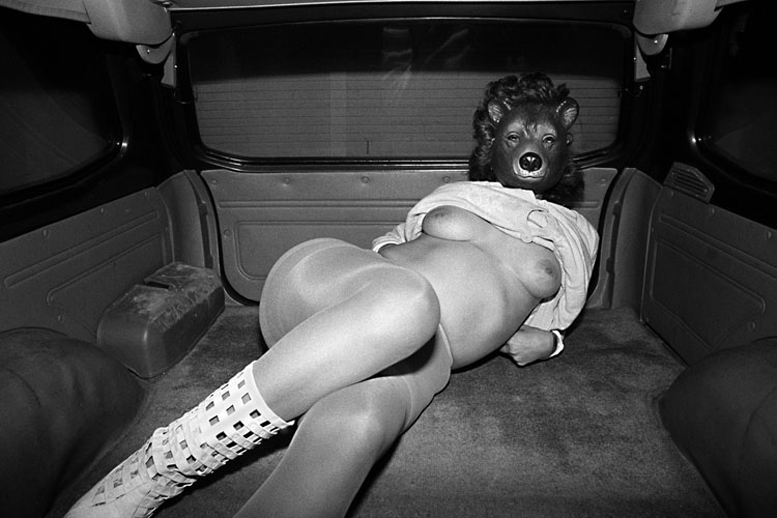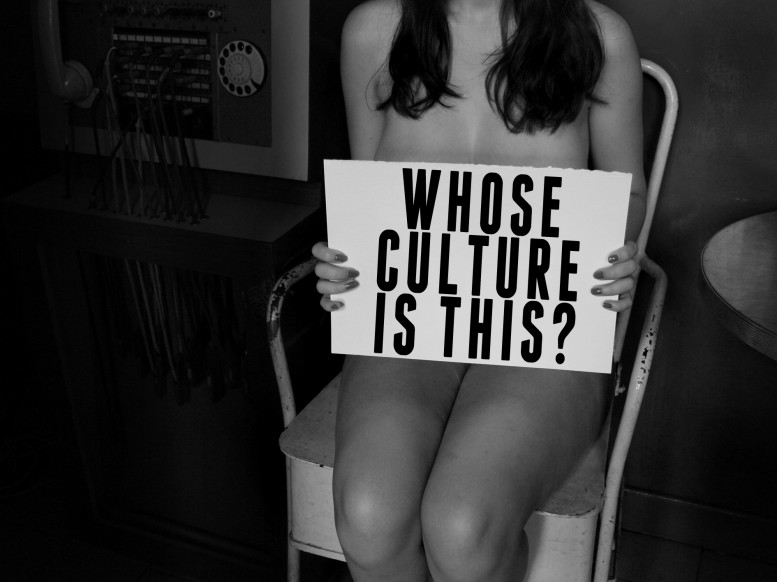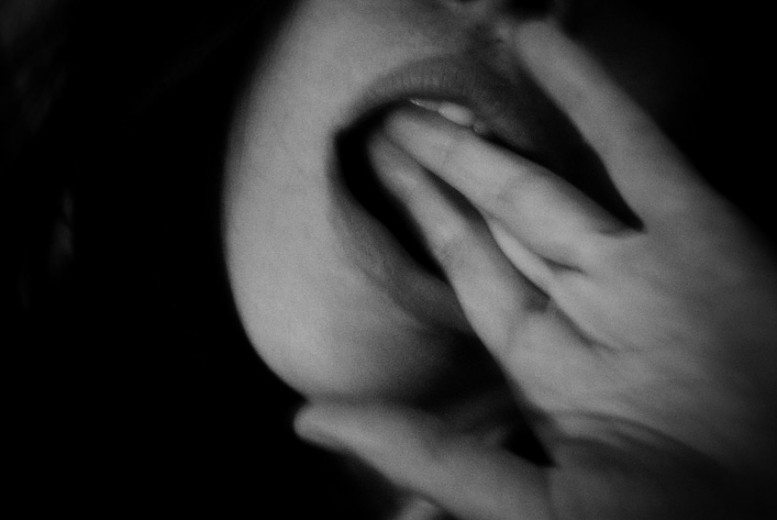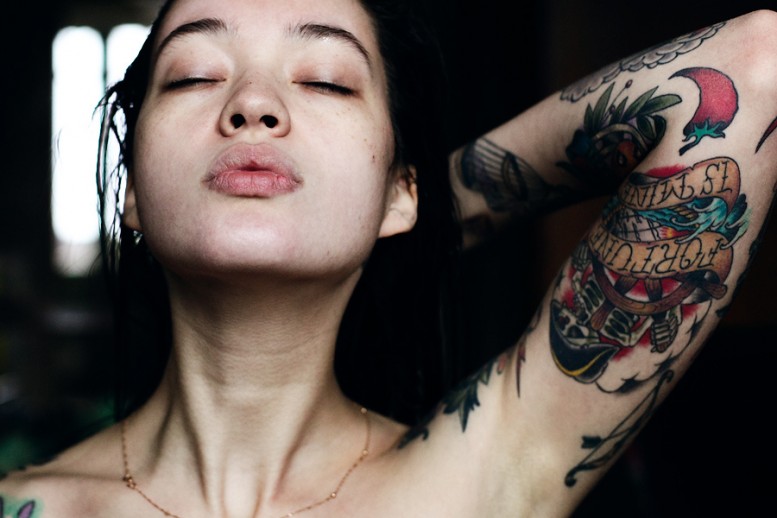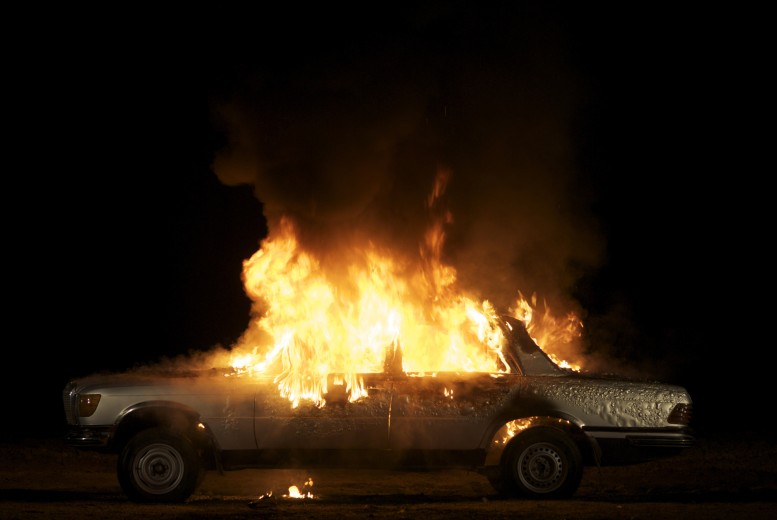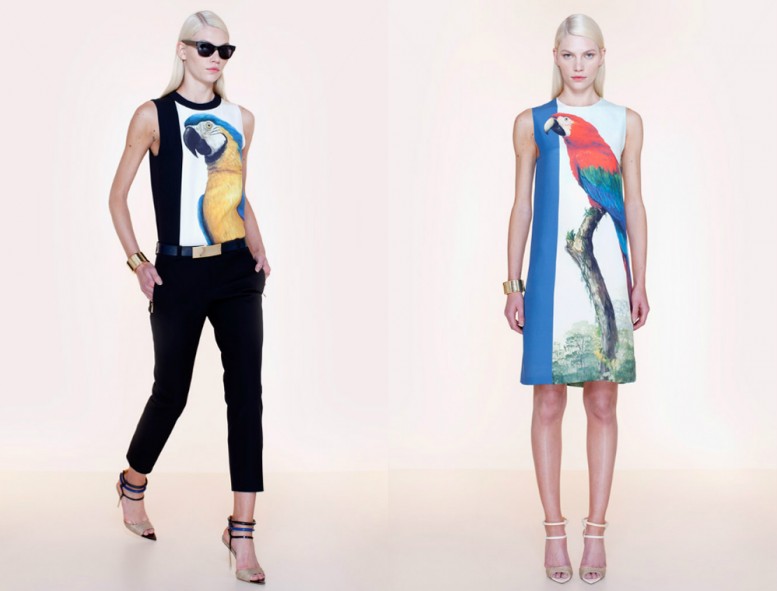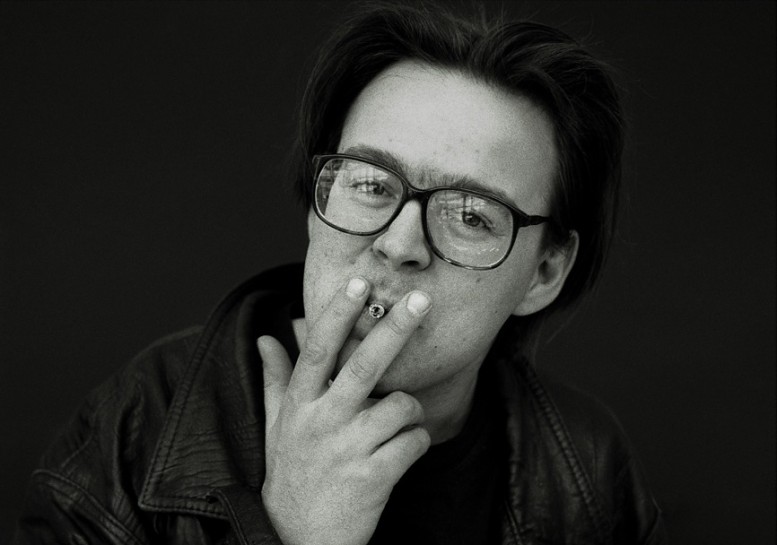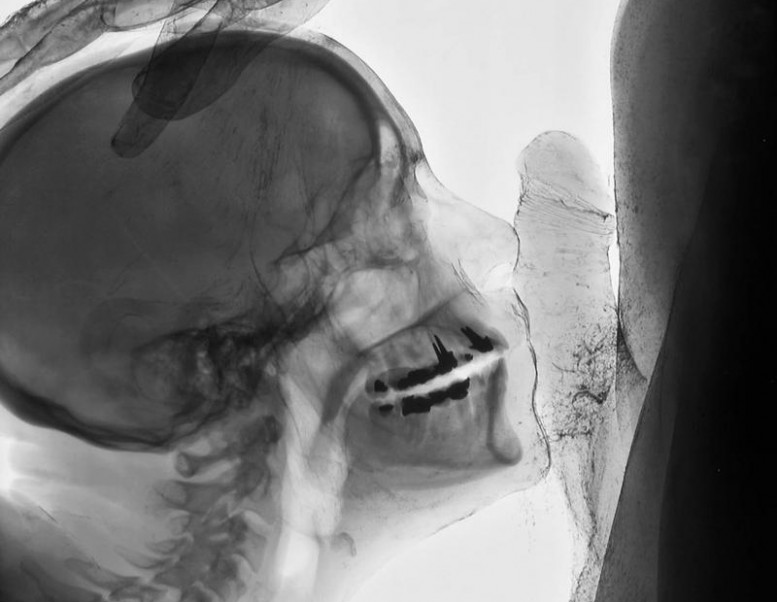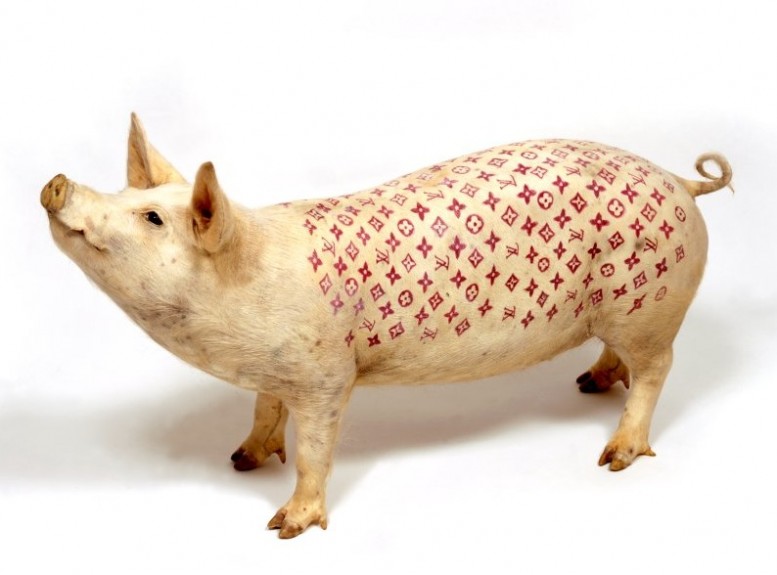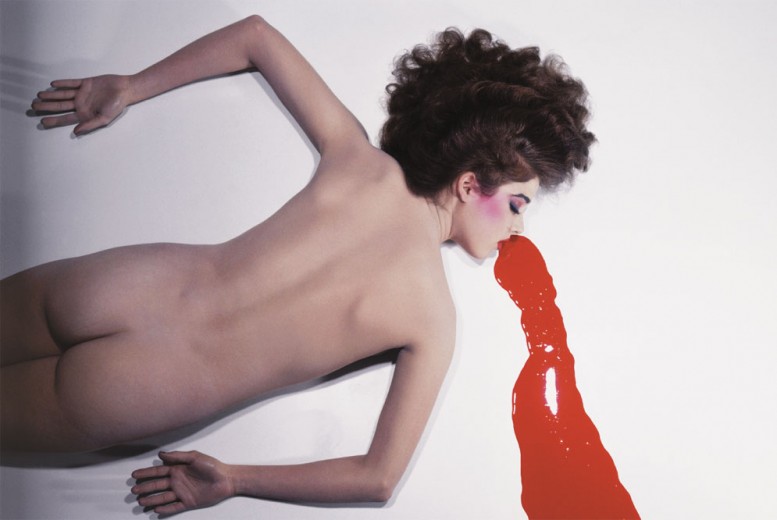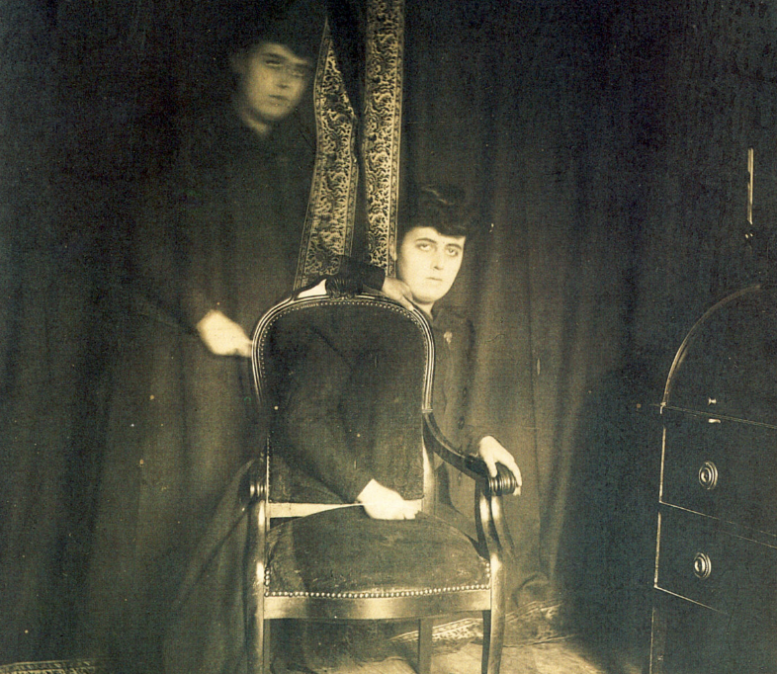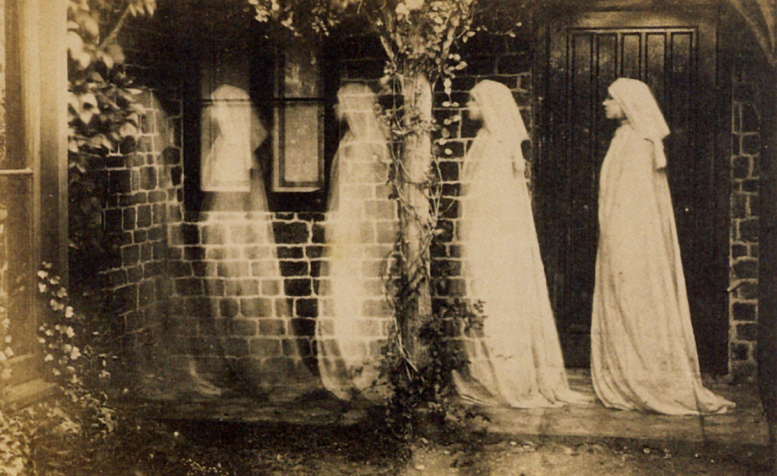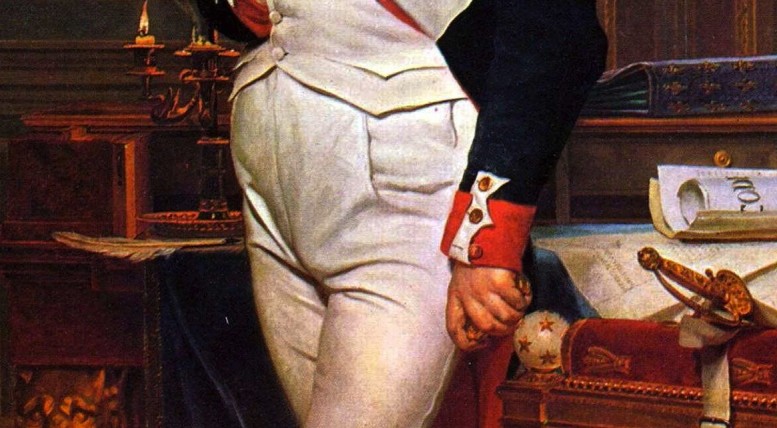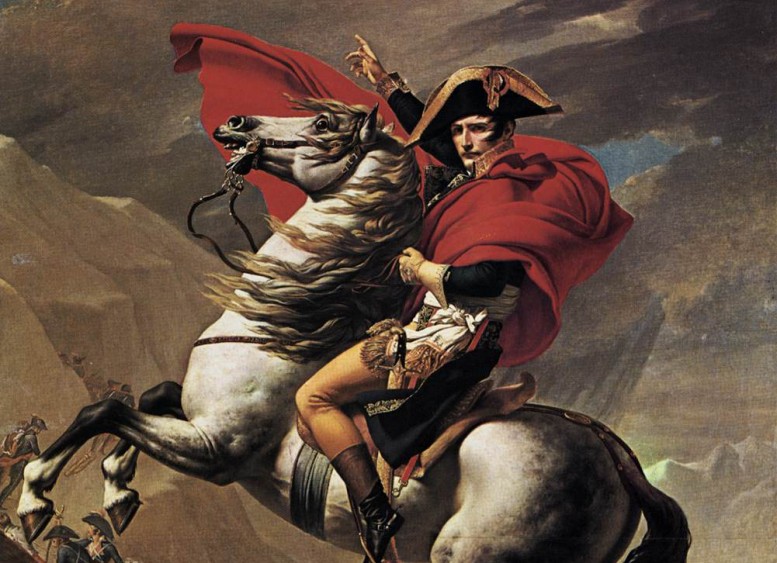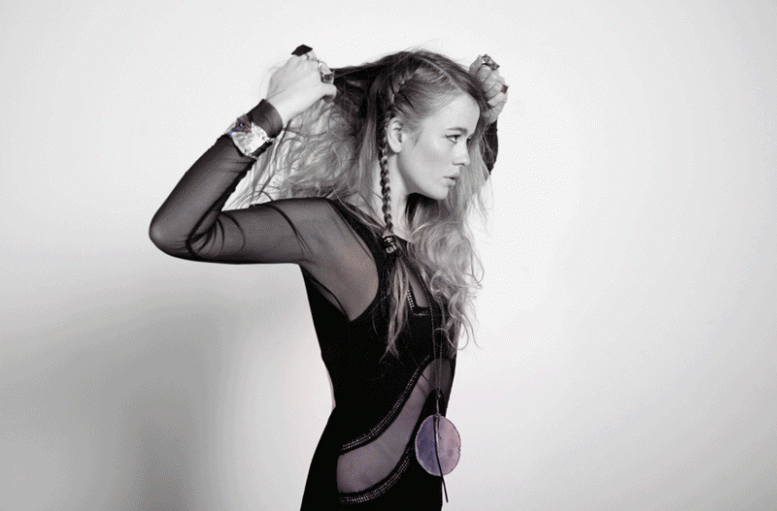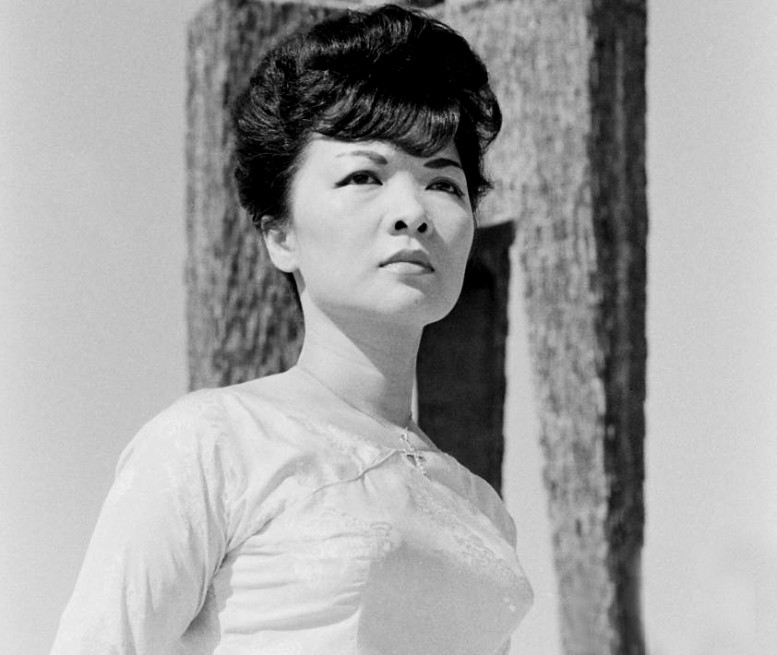Presenting a year in the life of Adarsha Benjamin, part two: February: Nostalgia for the Light – Los Angeles, CA. "I am a February baby. The month of my birth. The month of my new born existence; every year. Its my sacred time of unraveling and unveiling. I did't take a lot of photos that month, just shots of people and the streets of LA on black & white. I listened to this song every day."
January: The Fool of Illusion – BIG SUR
As the end of the year nears we'll all undoubtably be taking a look back on our lives during last twelve months. Luckily, photographer and Autre creative director Adarsha Benjamin has visual documentation. During the next twelve days we'll be rolling a out a series, a retrospective of sorts, of photographs by Adarsha Benjamin and a specially selected song for each month of her life in 2011. Presenting a year in the life of Adarsha Benjamin, part one: January 2011: The Fool of Illusion – BIG SUR.
LOWLIFE, a Memoir by Scot Sothern
California, 1986–When I pulled off the freeway into San Diego, I had a single twenty dollar bill in my wallet. My car, a 1973 Toyota station wagon, rattled my teeth and died in idle. At stops I had to divide my right foot: heel on the brake, toes revving the accelerator. I had barely enough gas to get back to Los Angeles. See more after the jump....
On El Cajon Boulevard I drove slowly and studied the street walkers. In their eyes I could see desperation-induced madness, premature death. In my eyes they could see my craving for the nasty little secret I kept from friends and family. I could give my twenty dollars to any one of these women. I could buy a quick sex fix and she could buy enough crack to put a smile on her face for an hour or so.
In the passenger seat, belted and buckled, frail and beautiful, my four-year-old son, Dashiell, slept curled around his best friend, a pillow-sized stuffed facsimile of Hulk Hogan. It was Sunday night and my weekend with my little boy was over.
When we arrived at his mother's house, Dash awoke. He cried and clung tightly, arms around my neck. He didn't want me to go. His mother Sylvia, my ex-wife, was happy to see me go, but first she wanted money. I made lame excuses. She called me a jerk and pried our son from my embrace. I took my twenty dollars and drove back to El Cajon Boulevard.
Cruising nighttime byways for an adrenaline high, Scot Sothern first patronized the marketplace of curbside prostitution on a prurient whim. Diving to the murky depths of sexual obsession he resurfaced five years later, shell shocked, and without excuse. While there, trusty Nikon in hand, Scot snapped what he saw: full-frontal X-rated realities, fine-art documents, black and white, pathos and pizzazz.
LOWLIFE is an illustrated diary of dysfunction; the confessions of a befuddled baby-boomer maintaining a precarious connection to propriety and fatherhood while side-tripping into noirish infatuations. These stories and images, shot mostly in Southern California between 1986 and 1990 record the existence of the many disenfranchised Americans, men and women, hawking body and soul for the price of a Big Mac and a fix, struggling in a culture that deems them criminal and expendable.
On view starting November 5 (on view until December 3) at the Drkrm Gallery in Los Angeles presents Lowlife Photographs and Literary Vignettes by Scot Sothern with an opening night book signing of Lowlife the book, a limited edition monograph published by Stanley Barker UK now publishing.
Alice Arisu: Whose Culture is This?
Alice Arisu is a 24 year old artist based in Milan. Her work leans on the powerful ability to communicate with the psychological methods advertising – she is studying Theories and Methods for Communication at the University of Milan – so Arisu uses slogans, in effective, passive protest, to articulate our societal shortcomings – namely the identity of women in the multi-fragmented, exploitive landscape of mainstream media.
I was interested in Arisu's latest series, entitled Who Culture Is This?, which is so apropo to our current zeitgeist, so I asked her what her thoughts were behind this project. Here is what she had to say:
In my previous project, “Sin Cara” (“Faceless” in Spanish, which was created for an exhibition in Madrid), the main idea was to suggest how universal female condition could be by hiding or erasing their faces: women may lose their identity for many different, oppressive influences. The "Whose Culture is This?" series shares the same sentiment, but now I am using black and white photography which I used to love at the very beginning of my “ career”, with its peculiar light and an attempt to lack in perspective. I fuse it with the use of written word, which is inspired by advertisements, but there's no slogan, just sharp sentences and questions, which I hope will lead to reflection as unique way of release.
Chasing Shadows by Santu Mofokeng
They are strewn like litter across the floor in my office. Others are kept in cabinets, and a few are in frames. Whatever lies, deceptions or promises brought them into being, I wonder. I am referring to the products of my gaze, refracted and reflecting, somewhat muted, not unlike light dancing on the surface of the dirty puddle that is my memory: Images of people in moments of contemplation, performance, confrontation and perhaps celebration. My exploration and participation in the fictions we call relationship and community. And of environments, real and imagined. Insignificant experiences, selected and isolated from tedium, moments reduced to mere appearances, simply as surfaces reflecting light, arrested and stored in the long memory of film. A brooding corpus of so many episodes remembered and forgotten.
This anthology of photographs was initially conceived as a metaphorical biography, though I now have reservations about that conception. The bias for the dark, the bizarre and the allegorical in the work is my entire fault. For, like Ezekiel in the Bible, I embrace the apocalypse. I can easily blame my mother and father for my obsession with meaning and purpose, and the fact that I find beauty without truth unsatisfactory. Except, I suspect the problem lies elsewhere. It is located somewhere between 1956 and now.
These photographs explore a part of me which I have so far neglected in my work, – my spirituality. There are several reasons why it was ignored: ambivalence, embarrassment, fear of the political and other implications or perhaps the deflection of my gaze. This exhibit is an attempt to come to terms with my schizophrenic existence. The expression I take as a title for this exhibition, "Chasing Shadows" has quixotic connotations in English, but in African languages its meaning is antithetical.
"...while I feel reluctant to partake
in this gossamer world,
I can identify with it."
"Shadow" does not carry the same image or meaning as seriti or is'thunzi. The word in Sotho and Zulu is difficult to pin down to any single meaning. In everyday use seriti or is'thunzi can mean anything from aura, presence, dignity, confidence, power, spirit, essence, status and or wellbeing. The words in the vernacular also imply the experience of being loved or feared. One's seriti / is'thunzi can be positive or negative and can exert a powerful influence. Having a good or bad seriti / is'thunzi depends on the caprice of enemies, witches, relatives both dead and living, friends or associations, and on circumstance or time. Having and defending one's own seriti / is'thunzi from evil forces or attacking the seriti / is'thunzi of one's perceived enemies preoccupies and torments many African people. Those Africans who disdain these notions are at least aware of seriti/ is'thunzi. Especially the elite, when they engage in conversation with white South Africans, they often deny this black African consciousness.
I grew up on the threshing floor of faith. A faith that is both ritual and spiritual – a bizarre cocktail of beliefs that completely embraces pagan rituals as well as Christian beliefs. And while I feel reluctant to partake in this gossamer world, I can identify with it. It does not strike me as 'peculiar'. Yet, I still try to avoid being trapped in its hypnotic embrace, which seems to mock my carefully cultivated indifference and self confidence. I feel ambivalent about my ambivalence, embarrassed at my embarrassment.
This project has steered me to places where reality blended in freely with unreality, where my knowledge of the photographic medium was tested to the limit. While the images record rituals, fetishes and settings, I am not certain that I captured on film the essence of the consciousness I saw displayed. Perhaps, I was looking for something that refuses to be photographed. I was only chasing shadows, perhaps.
Text by Santu Mofokeng, 1997
Santu Mofokeng, Shadow Hunter is on view now at the Jeu de Paume in Paris - The exhibition and the accompanying book bring together a unique selection of the photographic essays made by Santu Mofokeng over the last thirty years. Well-known from his projects Black Photo Album/Look at me: 1890-1900s, Township Billboards: Beauty, sex and cell phones, Trauma Landscapes and Chasing Shadows, the South African artist took the opportunity of the invitation for this show and the production of his first comprehensive monograph, to delve deep into his artistic archive. "Santu Mofokeng, Chasing Shadows – 30 years of photographic essays" presents a selection of more than 200 images (photographs and a slideshow), texts and documents. The photographic essays he composed over the years, some of which are a life-long work in progress, range from the Soweto of his youth, from his investigations of life on the farms, the everyday life of the township and in particular, representations of the self and family histories of black South Africans, to images from the artist’s ongoing exploration of religious rituals and of typologies of landscapes, including his most current project Radiant Landscapes, commissioned specially for this retrospective.
The Fashion Photography of MASHA MEL
Masha Mel is a Moscow born London based fashion photographer. Her aesthetic hides no scars – by the dust and beautiful minutiae of analog's flotsam Masha's photography stays true to a medium breathing slow, hurried breaths in the death-bed of an industry in the throes of a digital revolution.
Not So Sad Moon: The Photography of Luna Tristá
Cuban photographer Luna Tristá's photography is a pastiche of black and white popshots of cut up glamor and a nod to a distant, more decadent age. Her images are sexy as hell without being put on, and the people captured have a seemingly fearless honesty. But what I like most about Tristá's photographs is the tinge of sadness with romanticism–almost like a visual excerpt from one of Jean Genet's diaries or the aura of the calm background characters of a Toulouse Lautrec painting. "I don't search perfection but the untiring conquest of their monsters. The obscurity, at the same time, is the beauty that seduces" Luna Tristá. "
No Pity for a Coward: The Photography of Ira Chernova
Pas Un Autre's Jennifer Mulhare found this amazing photographer based in Amsterdam and Moscow named Ira Chernova. She takes photographs of other people, but her most stunning model is herself. Here are a few of her self portraits.
[PHOTOGRAPHER] Logan White
Logan White is a Los Angeles based photographer. Her photography is a preternatural dance in a cabalistic garden.
Car Fetish
Superflex, Burning Car, 2008
When I think of car fetish I immediately think of David Cronenberg's 1996 film Crash. Its the erotic tale of a group of sexual outsiders who get their rocks off in car wrecks. One scene in particular, where Rosanna Arquette's character, who wears fish-nets and leg braces–obviously the result of some previous dalliance gone awry, and Holly Hunter's character get it on in the back of an old car. Theres a word for this kind of fetish–its called paraphilia, or an attraction to objects.
Andrew Bush, Man (possibly someone in character) traveling northwest at 60 mph on U.S.
The automobile is the foremost cultural touchstone of the 20th century, reflecting the social and cultural development of the western world and beyond. Both technical device and instrument of locomotion, it offers the most highly developed and widespread interface for human-machine interaction – while also functioning as a carrier of meaning, an individualized living room, a medium for escapes great and small, and a means of distancing oneself from others and of creating a personal profile. The attraction of speed and the new feeling of time and space ushered in by the advent of the automobile had a formative influence on (urban) perception and the rhythm of modern life in the early years of the 20th century. The view through the windshield still drives our outlook on life today, as well as coloring the cinematic perspective on reality. An exhibition "Car Fetish," at the Museum Tinguely in Basel, demonstrates the wide range of art influenced by the automobile. Around 160 artworks are featured by more than 80 artists, among them Giacomo Balla, Robert Frank, Jean Tinguely, Andy Warhol, Gerhard Richter, Chris Burden, Damián Ortega, Richard Prince or Superflex.
On view until October 9, 2011 at the Museum Tinguely in Basel, Switzerland www.tinguely.ch
Arnold Odermatt, Wolfenschiessen, 1964
Irving Penn: Radical Beauty
Fraenkel Gallery in San Francisco presents RADICAL BEAUTY 1946 - 2007, an exhibition of photographs by Irving Penn. On view from June 30 to August 20, the works span six decades of the artist's influential career. The nearly thirty photographs on view explore Penn's radical and long-standing investigation into what constitutes beauty, an aspect of his career that has received only passing attention. These works reflect the artist's deep appreciation for the diversity of human physiognomy, and challenge a media-driven and image-saturated society that has narrowed the very idea of beauty.
Known for depicting his subjects with a rare combination of precision and compositional elegance, Penn's work contrasts elements of the grotesque and the sublime. Throughout his early career, as a photographer at Vogue, and then later in his personal work, he consistently questioned and reinvented the parameters of physical beauty. His early nudes, from the late 1940s, were not exhibited until over three decades later. Alexandra Beller D, Nude 132, and Nude 18 are studies of an exuberance of flesh.
His subjects-from the highlands of Papua New Guinea to the high-society of the fashion world-are presented as distinct and particular. His portraiture is known for revealing the essentials of his sitter, devoid of superfluousness. In Five Okapa Warriors, New Guinea, the men face the camera frontally, their pierced nasal septums and bush arrows as rigid as their gaze. Several images in the exhibition obscure faces- Canvas Head With Hardware, Design by Jun Takahashi and Football Face, among others, alluding to the masks of fashion and persona.
Irving Penn, 1917-2009, was one of the most influential photographers of the twentieth century. Having studied art under Alexey Brodovitch, Penn began a decades-long career with Vogue where he became known for his groundbreaking fashion and celebrity portraiture. His sitters included many of the luminaries of the day, from Martha Graham and Marcel Duchamp, to Picasso, O’Keeffe and Tennessee Williams. He was equally renowned for his still life work. Flowers, food and all manner of detritus; cigarette butts, discarded paper cups, and chewing gum found their way into his studio. Later in his career he traveled the globe photographing indigenous people in a simulated, portable studio, producing memorable images from Africa, South America, and Papua New Guinea. Numerous books on his work have appeared, such as A Notebook at Random, Worlds in a Small Room, Irving Penn Portraits, and The Small Trades. His work is included in most major museum collections.
Pedro Lourenço Resort 2012
Pedro Lourenço has been drawing attention in Paris for masterful workmanship that belies his age—the Brazilian wunderkind is barely 21. Resort finds him in typically meticulous form but upping the real-world appeal even more than he did in his breakthrough Fall show. Inspired by his roots, he recruited the Brazilian artist Lelli de Orleans e Bragança to create the exclusive—and very on-trend—tropical bird paintings that he converted into prints for his deceptively simple shifts. Deceptively simple, in part, because the parrots' tails are cut out and glued to wrap around the back side of the silk dresses (yes, they're still hand-washable).
That's just the beginning of the special touches in this collection. The outer, rubberized layer of zip-front shifts are magnetized so they can be worn flipped open to reveal the matching prints on the lining of that outer layer and on the inner dress. If that sounds tricky, the results are pretty sublime. And they'll cost you. Which is why Lourenço has been adding more affordable separates like doubled silk jersey tanks and tees and miniskirts and cigarette pants with leather waistbands. This was another bold showing from an impressive young talent. Text by STYLE.COM
[ESSAY] The Cruelty of Humanness
If we could partially gauge an artist’s worldview from his or her art, there is little romance to be derived from Belgium artist Wim Delvoye’s prospect. Neither is there room for hypocrisy in his work. As viewers, we have no escape, but are instead confronted with what Delvoye (born 1965 in Wervik, Belgium) once described as “a cruelty of the body” in the ways he portrays and represents humanness - ways that are often blunt and blatant, lacking in subtlety or diplomacy.
He’s made friends perform explicit sexual acts in medical clinics and had them recorded with X-ray scans, which were then sandwiched between colored glass to make windows in the tradition of medieval stained glass. Instead of human flesh, you see skeletons engaging in kissing, fondling and pleasuring each other. It’s a rather unfamiliar sight, yet it’s both realistic and real. Delvoye runs a pig farm in Beijing and sells tattooed pigskins and stuffed, tattooed pigs. And above all, he has made machines that digest food and discharge excrement. “If you really want to show a portrait of mankind, you have to look for the humanness.” And for that matter, Wim Delvoye’s works revolve around two pivotal axes: “one is the world of the frieze - decorative, the elegance of arabesques; the other is excrement.” The artist, however, sees little difference between the two: “The ornament, to an extent, is a form of waste.”
Cloaca, probably by far Delvoye’s best-known work, is a large-scale installation that duplicates the functions of the human digestive system and exists in a variety of models and incarnations. To put it simply, Cloaca is a machine that eats and shits. When exhibited, regular food is prepared by chefs and fed regularly (usually twice a day) into the workings of the machine, or should we say, the human machine. It then dutifully extrudes the remaining solids onto a conveyer belt, which is finally vacuum-packed and sold in plexi cases for $1,000 each.
“If you really want to show a portrait of mankind,
you have to look for the humanness.”
Cloaca was not simply a meditation on waste. The fact that a machine that produced shit was accepted and highly valued in the art circle was rather a provocation to an art world that had become increasingly commercialized since the mid-1990s, with the arrival of the Internet boom and dotcom economy. During an era when everything could potentially carry a price tag as an art object, Cloaca and its wide acceptance and popularity were a parody of the art system itself and what was considered valuable at the time. It mocked the very structure that supported its presentation and operation. Dan Cameron, former Senior Curator of New York’s New Museum has written of Cloaca, “by replicating one of our most crucial biological functions, Delvoye forces viewers both to consider our social discomfort with such functions and to question the elaborate cultural mechanisms that we have constructed to keep them from view.”
With another ongoing project, his “Pigskins” and “Stuffed Tattooed Pigs” series, Delvoye once again challenged the level of tolerance and the notion of worthiness in both the art system and our societies by tattooing patterns on live pigs and selling both tattooed pigskins and stuffed pigs as his artworks. His act of tattooing pigs has caused reactions and strong opposition from animal right activists in Europe, and he has since re-established a pig farm on the outskirts of Beijing, which he calls Art Farm. What makes the whole operation even more thought provoking is the fact that these art products are still exhibited and consumed in the international art context. While Delvoye found it impossible to continue having pigs tattooed withoutcausing controversy in Western societies, does their status as artworks make the products of this operation immune to criticism and allow it to acquire a certain positive value within the system again? Delvoye, however, wouldn’t want us to continue turning a blind eye to the underlying currents of such a mechanism, and instead brings it to us without disguise. Art Farm is a documentary of the full operation of his pig farm in China, shot on video from three different angles. We can’t pretend to know the easy part - the beautiful pigskin - without knowing how it has been made. There is no illusion or mystery left.
In addition to the three-screen video projection of Art Farm and some of his tattooed pigskins, Wim Delvoye will also share with us various sardonic products of his confrontational engagements with the art world andsociety in his exhibition at the Beijing branch of Galerie Urs Meile, Beijing-Lucerne. In his incessant interrogation of the limits and accepted order of the art system, Wim Delvoye has proven himself capable of creating objects and sculptures that appear to be eye-catching and even ornamental, yet at the same time address important issues Delvoye would like us to think about as we attempt to understand how the art world operates and to consider the multiple facets of our own existence.
Clio (2001-2002) and Terpsichore (2001-2002) are among the selection of works presented in the exhibition. These two works come from a series of stained glass windows incorporating images of X-ray photographs of cavorting couples that is part of his body of “Gothic Works”. Named after the nine muses of Greek mythology - Greek goddesses that ruled over the arts and sciences and offered inspiration in those subjects - this series involves Delvoye’s friends performing sexual acts in medical X-ray clinics and being captured on X-ray film, reduced to nothing but pure mechanical and graphic patterns. Another important branch of Delvoye’s “Gothic Works” is also presented in Beijing with Concrete Mixer (scale model 1:4) (2010) and Cement Truck (scale model) (2008). They are steel sculptures with meticulously carved, Gothic-style patterns.
The notion of the interchangeable nature of what’s useful and what’s useless continues to inform Delvoye’s manipulation of used objects. He transforms things that seem useful in everyday life into purely decorative items that then carry a different value from their everyday uses. Such items then become less useful in a practical context, but they are assigned a visual and artistic value in the art context. He has used car tires handcrafted with intricate designs that turned them into purely beautiful objects.
With his work, Delvoye continuously exposes us to the humanness of both the physical body and our social structures, particularly those sides that are not always pleasant, warm or generally considered constructive, but are equally valid and relevant to our being. Delvoye makes bare the less visible threads of our social fabric by giving them a place in the art context, and grants them a cultural and thus monetary sense of worthiness, simultaneously contemplating and revealing the mechanisms of the cultural industry. Loosely grouped to give a first impression of some of Delvoye’s important practices, this solo show offers barely the tip of the iceberg in terms of introducing the complex oeuvre of one of the most prolific artists of the last decade.
Text by Carol Yinghua Lu
Written on the occasion of Wim Delvoye’s solo exhibition at Galerie Urs Meile on view until July 31. www.galeriursmeile.com
Model as Muse: The Kate Moss Portfolio
Glen Luchford, Kate Moss, 1994
Ephemeral, unique, stunning, imperfect, a blank canvas. These are all words that have been used to describe Kate Moss, the original “waif” who helped effect a watershed change in fashion in the early 90’s and continues to inspire a slew of diverse, evocative visions from some of the most highly-acclaimed photographers in the world. Moss’s is arguably one of the most controversial, intriguing, mesmerizing and instantly recognizable faces of our era. Simultaneously plain and gorgeous, Moss is exalted by photographers for the striking presence and personality she brings to the photographic medium, as well as her unmatched ability to morph into anything—femme fatale, elegant society woman, innocent child, tomboy, seductress, goddess.
Bruce Weber, Kate Moss, 1997
Model as Muse: The Kate Moss Portfolio opened this past Thursday, May 13th at Danziger Projects’ new location in Chelsea. The intimate, two-room gallery displays the work of 11 of the world’s leading fashion photographers, including Annie Leibovitz, Glen Luchford, Terry Richardson, Mario Sorrenti, Mario Testino, Juergen Teller, Bruce Weber, Inez Van Lamsweerde, Vinoodh Matadin and Herb Ritts, each of whom captured the unusual, captivating British icon at different points throughout her illustrious career. The portfolio includes never-before-seen shots of Moss at the beginning of her career in 1988, Chuck Close’s faceless nude daguerrotype diptych, one of notorious team Mert Alas and Marcus Piggott’s famed glamour shots from the 2008 issue of Interview magazine showcasing its new layout, several photographs of Moss at the age of eighteen on her first trip to New York, and countless other breathtaking works.
“I think that Kate Moss is not so much a model or a supermodel, but an artist-model. There is a quality that she has that inspires photographers to do their best and create something that is both the epitome of their style and also takes them as far into [the place] where art meets fashion and where fashion meets art,” said James Danziger, owner of the gallery and curator of the exhibit.
Model as Muse:The Kate Moss Portfolio is now on display at Danziger Projects, 527 West 23rd St, New York. www.danzigerprojects.com
Text by Annabel Graham for Pas Un Autre
(Annabel Graham is a photographer and writer based in NYC, she has worked for Interview Magazine as well as the Paris Review, and she is a regular contributor to Pas Un Autre, visit her blog Can I Borrow Your Fire)
Glen Lemuel, Kate Moss, 1988
Guy Bourdin: Oedipus Rex & High Heels
Guy Bourdin - Pentax Calender - 1980
You wouldn't need Freud to tell Guy Bourdin that his unhealthy fetish for redheaded women stems from his mother who abandoned him when he was only a year old. Twisted and contorted like compromised balloon dogs and subordinate porcelain dolls, Bourdin's redheads became the tumescent idols of his sparkling photographic oeuvre. Something of an antithesis to Helmut Newton - Bourdin was more mercurial, irascible - never once having the semblance of desire to publicly exhibit his work and angrily turning down what must have been multiple book offers. Myths are also quick to to invent Bourdin as something of a sadist - a regular 21st century Marquis de Sade - leading those close to him to take desperate measures to escape him. One of his girlfriends hung herself - her body discovered by Bourdin's 13 year old son. Another attempted suicide by slashing her wrists. A third died in a fall. Another of a drug overdose while in bed watching television. Its the stuff of legend. Once, Bourdin's assistants covered a pair of models with black pearls using a type of glue that interfered with the ability to regulate body temperature - the pearls were feverishly removed and after the models awoke from losing consciousness Bourdin muttered, coldly, "Oh, it would be beautiful to photograph them dead in bed." However, beyond the circumstances of his turbulent life and troubled psyche, Bourdin was a luminary who created indelibly brilliant images that will no doubt have an eternal influence on fashion photography.
Guy Bourdin - Jourdan Campaign - Spring 1971
Bourdin's only memory of his mother was vague at best: Parisienne, heavy make up, pale skin, and light red hair. Born in 1928 in Paris, after a year Bourdin was abandoned and forced to live with his grandparents. Whilst abroad in the French armed forces Bourdin would see an image that would infect his imagination with the insatiable desire to take pictures: a close up of a bell pepper by the photographer Edward Weston. The pepper, no doubt, a twisted, erotic nod to the female form would inspire any artist and at a glance could make a man, for the first time, pine for a legume.
"There is a sum of evil equal to the sum of good, the continuing equilibrium of the world requires that there be as many good people as wicked people." Marquis de Sade
When Bourdin returned from military service in Dakar he sought out the mentorship of Man Ray. Lofty goals for a young artist, but Bourdin was a total freak. Bourdin arrived at Man Ray's doorstep six times. Each time Bourdin was turned away by Man Ray's wife, but on his last try Man Ray opened the door. Bourdin would become his protégé. In the 1950s Bourdin photographed fashion editorials for French Vogue - he was one of their favorite "go to" photographers, but it wasn't until he was with the French shoe company Jourdan that he would created most his iconic images.
Bourdin's campaigns for Jourdan would invent a style that would drastically change an otherwise stolid landscape of 1950s commercial fashion photography. Bourdin, with his loud colors, violence, murder scenes, and women sprawled out with an akinetic sense of sexual electricity, would change all that, forever. Guy Bourdin, who died of cancer in 1991, was extremely poor at perserving his own legacy. His estate wasn't even organized until the year 2000. Maybe he believed he didn't deserve it or maybe he didn't believe in a legacy at all. The one thing he did believe in was art - art to the last drop.
Exhibits, although they are becoming much less rare, are sights to behold. Now on view at the Casa de Cultura Mario Quintana in Brazil is a retrospective of Guy Bourdin's work from his early work in the 1950s all the way to 1990. www.ccmq.com.br
Text by Oliver Maxwell Kupper for Pas Un Autre
Guy Bourdin - Lui Magazine
Spirited Away: A Brief History of Haunted Photography
Jacques Henri Lartigue “Zissou as a ghost Pont-de-l'Arche”, 1905
You could imagine it really: developing a photograph only to discover a ghostly apparition - a mysterious double, a whitish ephemera. It could be enough to make you believe in ghosts if you knew it wasn't a hoax. Could the apparition be a long lost relative? Could it actually be a ghost? They must have wondered. During the nascence of photography spirit photography was in vogue. Photography still held on to a sort of magical aura and to use it to communicate with the dead made photography a portal into the afterlife. It was the 1860s - people had lost loved ones in the Civil War - death was omnipresent and gullibility was at an all time high. One of the greatest spirit photographers was William H. Mumler. One day he developed a photograph that appeared to show a cousin that had been deceased for twelve years - it was actually a double exposure - and Mumler had inadvertently stumbled on to his calling. Like a vulture Mumler preyed on people's greif. One of Mumler's most famous photographs apparently shows Mary Todd Lincoln with the "ghost" of her husband, Abraham Lincoln. Mumler would eventually be tried in court as fraud. He was acquitted, but his career was destroyed and he died penniless. What are left of the spirit photographs today are haunting; some are ridiculous. We know now they weren't actual spirits, but they were symbolic, visual accountings of a zeitgeist - of humanity's willingness to exploit technology for our insatiable, lustful curiosity and material gain.
Albert von Schrenck-Notzing, "The medium Eva C. with a materialization on her head and a luminous apparition between her hands", May 1912
Anonymous, "Partial dematerialization of the medium Marguerite Beuttinger", 1920
Madge Donohoe, "Skotograph", 1930
Anonymous, "Levitation of the medium Colin Evans, photographed in darkness using infrared, from the front", 1938
Albert von Schrenck-Notzing, "The medium Stanislawa P: emission and resorption of an ectoplasmic substance through the mouth", 1913
Anonymous, "The ghost of Bernadette Soubirous", 1890, Albumen silver print
Thomas Glendenning Hamilton, "Mary M. with umbrella ectoplasm', 25 February 1934
[TODAY in HISTORY] Napoleon Bonaparte Dies in Exile
This isn't just any history piece - this is the true tale of a great emperor's penis. In 1977 Napoleon Bonaparte's shriveled, severed 1.5 inch penis was sold to urologist John K. Lattimer for three thousand American dollars. It should be noted, for good measure, that Lattimer also owned a pair of Herman Göring's underwear. I would hate to think that 190 years after my death my shriveled penis would be sitting in a nice wooden box in some stranger's attic, but then again thats never really been my concern.
Described as looking like "a shriveled eel, a shriveled seahorse and a small shriveled finger" - not my penis, Napoleon's - the anatomical specimen was hesitantly removed by his surgeon Francesco Antommarch in front of seventeen witnesses a day after Napoleon's death 190 years ago today on the island of Saint Helena. Along with other relics from the French emperor's life his penis has by far had the most enduring legend. Its starts with Abbé Ange Paul Vignali, who had given the last rites to Napoleon on St. Helena, and who brought back from the island roughly forty items belonging to the emperor. Items included a lock of Napoleon's hair, his famous white breeches, his will along with other various official and non-official documents, silverware, and of course....his penis.
"...his penis has by far had the most enduring legend."
In 1916, descendants of Vignali sold his collection of Napoleonic items, including the penis, to a British rare books firm Maggs Bros which in turn sold the collection for around two thousand dollars in 1924 to Philadelphia bibliophile A.S.W. Rosenbach who had it "enshrined" in an elaborate blue morocco and velvet box. In 1927 he exhibited it, along with the other Vignali relics, in the Museum of French Art in New York. Then in 1977 John K. Lattimer bought the penis at a Parisian auction. What the future has in store for Napoleon Bonaparte's penis no one knows for sure. Just recently, Lattimer's daughter turned down one hundred thousand dollars for the emperor's member. What we do know is that Napoleon Bonaparte, whether a tyrant or great leader, his legend will live on - an icon of military power and political genius. In honor of the anniversary of Napoleon Bonaparte's death Wikicollectors, a community for collectors, have put together a list of the top 5 strangest items of memorabilia relating to the emperor. www.wikicollecting.org
Text by Oliver Maxwell Kupper for Pas Un Autre
[Melbourne] Young Hunting Jewelry
Young Hunting is a unisex jewelry label by Melbourne designer Candice Agius. Each collection is "a philosophical exploration that questions and transcends realms influenced by a thematic thought." Each jewellery piece is limited and formed in Australia from high quality materials. Young Hunting is "for the rare, the intellectual and the unsharing." The new lookbook for the La Luna collection is a unique interactive look at some new pieces.
Power Is Wonderful - Total Power is Totally Wonderful
SHE WAS A BITCH, but the camera loved her. To most of the western world she was the antithesis of the modern American woman of the 1960s: brash, outspoken, and domineering. Regardless, Madame Nhu, who died only a few days ago, is and always will be an icon of the 20th century. Like a dagger in a sheath ready for murder, Madame Nhu was not at all sartorially oblivious. With her extremely tight fitting dresses and deep necklines, diamond crucifix necklace, bouffant hair-do and perfect eyebrows, photogs ate her up. She could've been a member of an all girl doo-wop group - one of Phil Spector's protégés. But beyond the surface, Madame Nhu has always been embroiled in heated political environments and this time it would spill over with incredible vengeance and blood.
Nhu's life reads like a movie script - with all the right players in all the right places - sometimes for better and sometimes for worse. Madame Nhu, who was born Tran Le Xuan 1924 to an aristocratic family, would go on to marry Ngo Đinh Nhu, who was the brother and chief adviser to President Ngo Dinh Diem of South Vietnam. After the dissolution of French Indochine, Vietnam was divided into a communist north, ruled by the wiry Marxist revolutionary Ho Chi Minh, and a republican South ruled by Emperor Bao Dai, who would appoint Ngo Dinh as president. The republican south was constantly at war with itself. With corrupt officials, generals - violence constantly threatened the regime. The regime's loudest, most controversial figure was Madame Nhu and everyone was well aware she was the one calling the shots inside the Presidential Palace. Madame Nhu became a thorn in everyone's side - a spokeswoman of a corrupted, fat-off-the-land South Vietnam that stood for everything the communist north despised.
As the sixties wore on and a war between two Vietnams intensified, the intrigue was too hard for America to resist. South Vietnam would also became a thorn in America's side in their efforts to squash the communist North. It was as if Madame Nhu was a symbol, a siren of the trifecta that would bring three worlds together into a bloody conflict that would last nearly a decade. But all this war was all too familiar to a Vietnam fighting for its independence for close to eighty years; everyone knows practice makes perfect.
On November 1, 1963, while Madame Nhu was is Beverly Hills with her 18 year old daughter, President Diem and Nhu, his brother and her husband, were killed in a supposed American backed assassination in a coup d'état led by a Southern general. Two sons and an infant daughter were still trapped in Vietnam at the family retreat - Madame Nhu feared the worst. She later learned they were safe and they joined Madame Nhu in exile in Rome where she lived until her death at 84 on April 24. She is survived by two sons and a daughter. What we have left to illustrate the strange, complicated and miraculous story are the striking images of a young, vivacious Madame Nhu making her stately duties around town as the 'first lady' of the State of Vietnam: shooting a .38 caliber pistol, attending a funeral, and generally looking proud over some invisible horizon, albeit with a hint of fatalistic ambivalence about the unknown future, an ambivalence constantly gripping her heart with what must have been a vice like grip.
Text by Oliver Maxwell Kupper for Pas Un Autre











